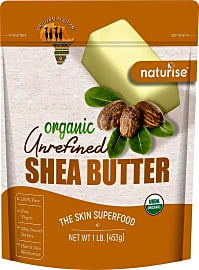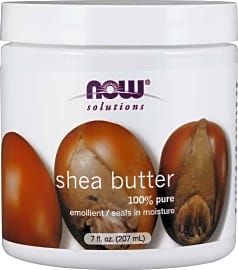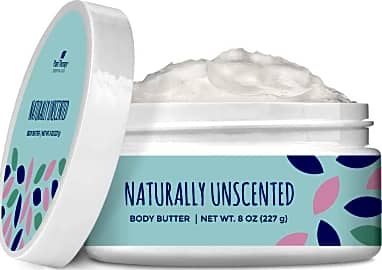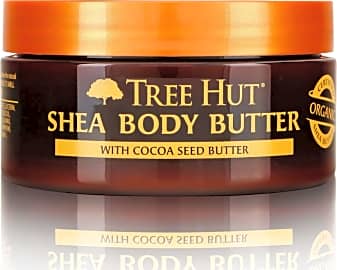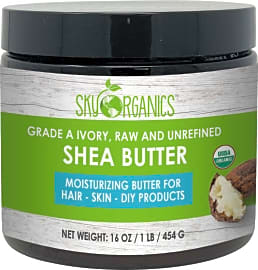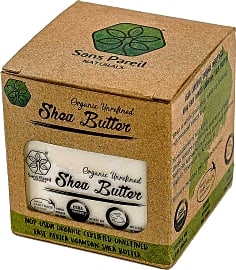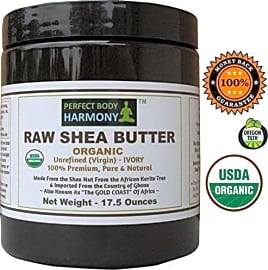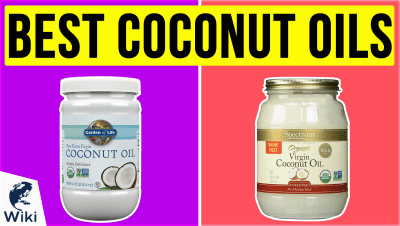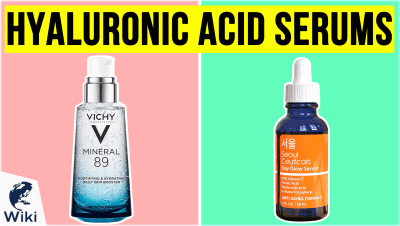The 10 Best Shea Butters

This wiki has been updated 37 times since it was first published in April of 2016. Shea butter has been a popular beauty standby for ages, and it's easy to see why. This soothing nut extract can bring relief to sufferers of eczema and psoriasis, reduce the appearance of stretch marks, treat minor burns, sooth acne-prone skin, and soften wrinkles. If you experience any of these, or if you simply have dry skin, you'll want to give one of the options on our list a try. When users buy our independently chosen editorial recommendations, we may earn commissions to help fund the Wiki.
Editor's Notes
October 30, 2020:
We thought Mary Tylor Naturals and Naturise Raw deserved to be added to our list because they are both top-notch raw, organic, and unrefined options.
While other selections are better known or less expensive, we kept Sans Pareil Naturals and FairTaleGhana Grade A on our list for several reasons. These companies work closely with farmers in Ghana and Uganda, prioritize fair trade practices, and offer eco-friendly packaging.
If you want something that has the consistency of lotion and absorbs quickly, you’ll most likely need to get a refined version. These are often whipped with other ingredients to make them light and creamy. The Body Shop Butter, which fits this category, was removed due to its lengthy list of man-made ingredients, with no indication as to what percentage is shea butter. Although Tree Hut 24 Hour Intense also uses a long list of ingredients, we felt they were a good whipped option because they use organic shea nuts and include naturally hydrating ingredients, like safflower oil, wax, and jojoba. Likewise, the recently added Plant Therapy offers a fragrance-free whipped butter mixed with coconut oil, aloe, and avocado extract. Plant Therapy comes unscented and Tree Hut 24 Hour Intense comes in fun scents, like lychee and plum.
If you’re looking for an option that does not contain chemicals, make sure you purchase one that is labeled “unrefined,” like Mary Tylor Naturals or Sky Organics Ivory. Most refining processes add fragrance and other unnatural ingredients, which may diminish the butter’s natural benefits. However, most unrefined versions are also raw, meaning they have not been filtered for impurities and may feel gritty in texture. It’s also worth noting that unrefined shea butter has a scent that some describe as nutty, while others say it’s reminiscent of burnt rubber. You may find this odor strong or unpleasant, though it is often preferred to using chemically-altered shea butter.
If you want to try a shea butter that’s smoother than unrefined alternatives, but don’t want fragrance or other ingredients “whipped” in, Now Solutions Cream is the best choice on our list. Without adding man-made ingredients, it goes through a refining process that removes the smoky scent and gritty texture.
Those removed from our list due to unavailability include Rise N’ Shine Cream, Raw Apothecary All-Natural, and Key West Health And Beauty.
November 06, 2019:
Shea butter is a great standalone moisturizer as well as an excellent addition to DIY skin care creations, and boasts inflammatory properties to help with issues like dermatitis and eczema. On its own, it is a food-grade item, and although it comes from nuts, it doesn't usually bring about a strong adverse reaction in those with nut allergies when used topically. That being said, while many companies claim their shea butter is non-comedogenic, by nature it still clogs pores and can make certain types of acne worse.
We prioritized raw, unrefined butters that use FairTrade certified, organic, cruelty-free ingredients. Many of the companies we've selected work together with cooperatives of villagers in Africa to ensure ethical labor conditions, too. If you're ever concerned about sourcing methods, always check manufacturer websites and look for the proper certifications.
Shea butter pairs extremely well with other popular skin care ingredients like coconut oil, honey, and many others, so we opted to lean on pure choices so that consumers could choose to add supplements as they saw fit.
With that in mind, we still wanted to add a few enriched selections, like The Body Shop Shea Body Butter, which includes additional moisturizes and natural oils to help it spread more evenly. There's also Tree Hut 24 Hour Intense, which comes in a natural shea butter formulation but is also offered in half a dozen interesting scent combinations like plum and lychee and marula and jasmine. If you're not a fan of unorthodox fragrances and want the choice between classic lavender, vanilla or unscented, consider Rise N' Shine Cream.
We sadly decided to remove L'Occitane Hand Cream since it only contains 20% shea butter. We also removed Cleopatra's Choice Premium due to complaints of inconsistencies in its texture, which makes it difficult to add to customized mixtures.
Special Honors
L'Occitane Certified Organic Pure Shea Butter This ultra-nourishing spot treatment from L'Occitane softens dry skin and is ideal for use on elbows, lips, cuticles, feet, and hair. It's 100% natural origin and produced in a fair trade agreement with cooperatives of women in Burkina Faso, and is certified organic and attested fair trade by Ecocert. For added moisturizing power and protection, it's enriched with antioxidant vitamin E. loccitane.com
Shea Butter: A Surprisingly Versatile Substance
By infusing dry, irritated skin with lasting moisture, shea butter works as well as some medicated products in treating the symptoms associated with such conditions.
Anyone with even a passing interest in products from the health and wellness sector -- or those concerned with skincare and matters related to age and beauty -- is aware that shea butter is one of the most popular health, beauty, and skincare products available today. We will discuss the actual substance and the production process of shea butter below, but first and foremost we shall discuss how and why to use this versatile substance.
Shea butter is prized primarily for its excellent moisturizing abilities. It can be applied to everything from painful cuticles on the fingers to cracked and calloused heels and toes. Shea butter can be rubbed into the scalp to provide relief from dryness and flaking, and it can be rubbed all over the skin to alleviate the itching, pain, and other symptoms that come with conditions like eczema. By infusing dry, irritated skin with lasting moisture, shea butter works as well as some medicated products in treating the symptoms associated with such conditions. (Be aware that it will not treat underlying causes, and frequent reapplication may be necessary for appreciable results.)
Shea butter is also prized for its ability to reduce the prominence of wrinkles and help minimize the visibility of stretch marks associated with pregnancy, weight loss, or simply with growing and/or aging. With regular application during a pregnancy, shea butter may even help prevent the formation of abdominal stretch marks. Consistent application of this soothing substance slows the deepening of wrinkles and can delay their initial formation. While shea butter cannot make extant wrinkles disappear, it can soften their appearance.
This product is also a wonderful choice for easing the many annoyances and pains associated with the winter months. It makes a deeply-hydrating lip balm, and can be slathered under the nose when a cold and sneezes have left the upper lip and philtrum raw and uncomfortable. A bit of shea in a thin cream form can also soothe the rash a baby develops in his or her diaper, season notwithstanding.
Shea butter is also an excellent massage oil; it allows a masseuse's hands to glide smoothly over all types of skin while moisturizing and nourishing in the process. Unlike many thinner oils, it does leave a thick residue that often necessitates bathing following a massage session, though.
Note that some people claim that shea butter can be used as a sunblock, but this assertion is of little merit from a scientific standpoint. If shea butter provides any benefit as a sunscreen, it is too minimal to be considered true protection. Shea butter can be infused with zinc oxide powder to make an effective homemade sunblock.
Choosing the Right Shea Butter
Most shea butter products contain just one ingredient: shea butter. A few are infused with other ingredients and these are, by in large, beneficial and safe. Examples of added elements include safflower oils that add more moisturizing capability and vitamin e, which can help heal damaged skin. However, if you have sensitive skin or are worried about any allergic reactions, stick to pure shea butter.
Most shea butter products contain just one ingredient: shea butter.
Even when you have decided on pure shea butter as your choice, there are still considerations to be made, such as how thick or thin a given option may be. Many thicker shea butter solutions are ideal for treating wrinkles, stretch marks or cuticles -- for targeting specific and isolated areas of the body, e.g. -- but are slow to absorb and leave behind lots of residue. For a shea butter you want to apply all over large sections of your body or to use as a massage oil, consider a thinner formula that will absorb more quickly. Thinner shea butters are also better for use on the scalp.
Many people who create their own cosmetic, health, and massage products at home choose to incorporate shea butter into the formulas they use. Shea butter readily blends with other ingredients, such as essential oils, while adding excellent moisturizing properties and helping to dissolve and bond together powdered products. Those interested in using shea butter in artisan products should consider 100 percent raw and unrefined options. These usually come in solid blocks, which can be readily melted for blending. Eschewing a shea butter that has been mixed with other ingredients or processed into any sort of reformed state allows you to maintain total control of your own product's ingredients, which your customers will appreciate.
What Is Shea Butter, Anyway?
Simply put, shea butter is fat. To be more precise, it is the triglyceride fatty product sourced from the nut of the vitellaria paradoxa, or shea tree, a tree native to Africa. Shea butter is extracted from the brownish-red nuts (technically called seeds, as they come from the inside of a small fruit) by first physically crushing the nuts, traditionally using a stone mortar and pestle, but usually completed with mechanical devices in the modern era.
It is also sometimes used in place of cocoa butter in making certain confections and baked goods, and imparts a pleasant smoky flavor to the foods in which it is found.
The crushed shea nuts are then roasted slowly while being constantly stirred, a process that breaks the fatty nut down into a thick paste to which water is usually added. This paste is then worked steadily to blend evenly, and then again subjected to slow and steady heat. This final heating further separates the water and oils, boiling off most of the former and allowing the refined oil to float and be carefully collected. This refined oil is cooled into raw shea butter, and is often then packaged as-is, or may be blended with other ingredients and/or processed into different types of creams, lotions, and other products.
While primarily used for skincare products, shea butter is indeed edible and is used in food preservation in some parts of the world. It is also sometimes used in place of cocoa butter in making certain confections and baked goods, and imparts a pleasant smoky flavor to the foods in which it is found.
For many years, shea butter production was a job largely relegated to women and children working in harsh conditions, and unfortunately this is still the case in some places. Take care to ensure that any option you buy is certified as Fair Trade, or has otherwise been vetted by a trusted organization.


